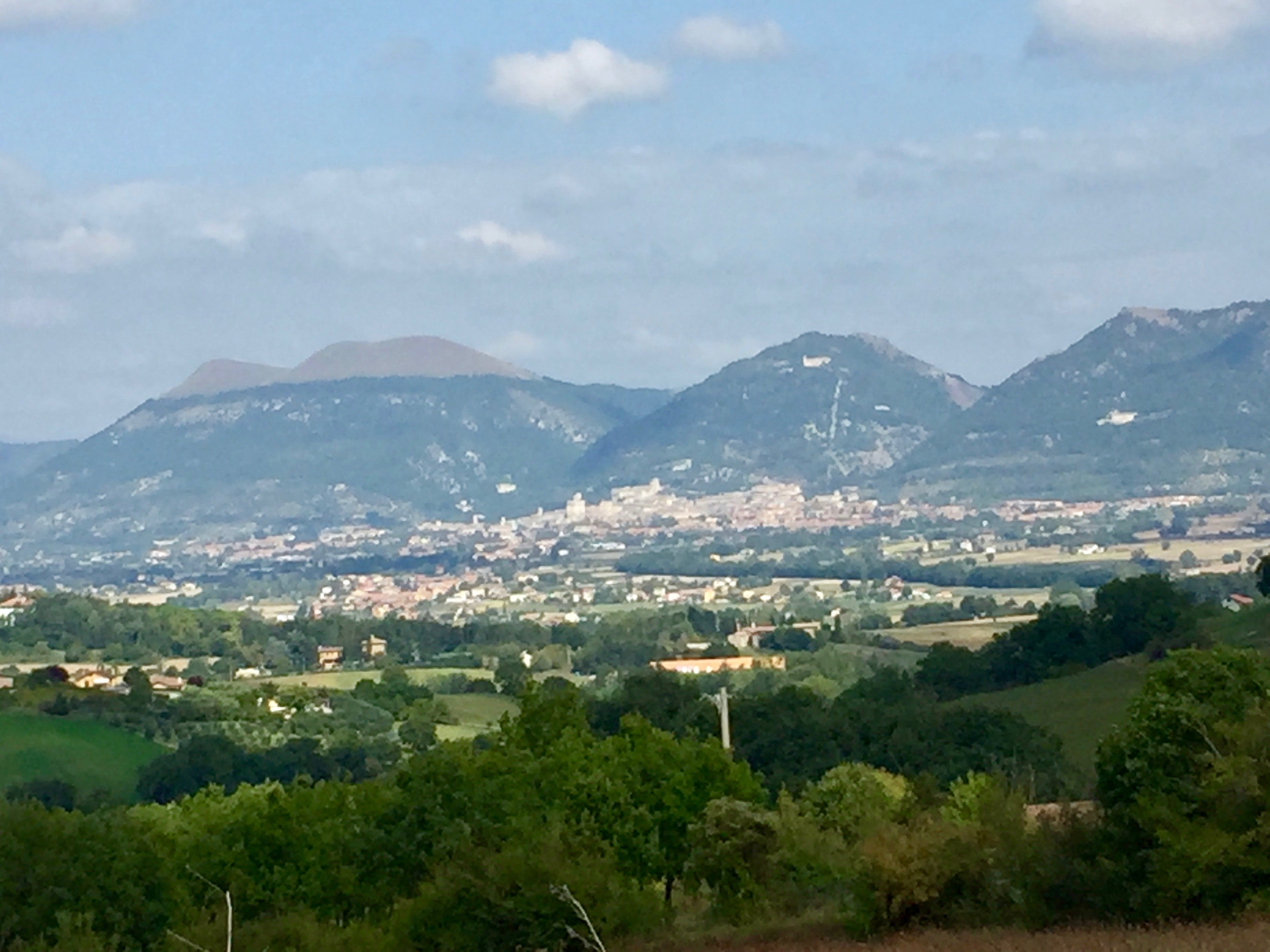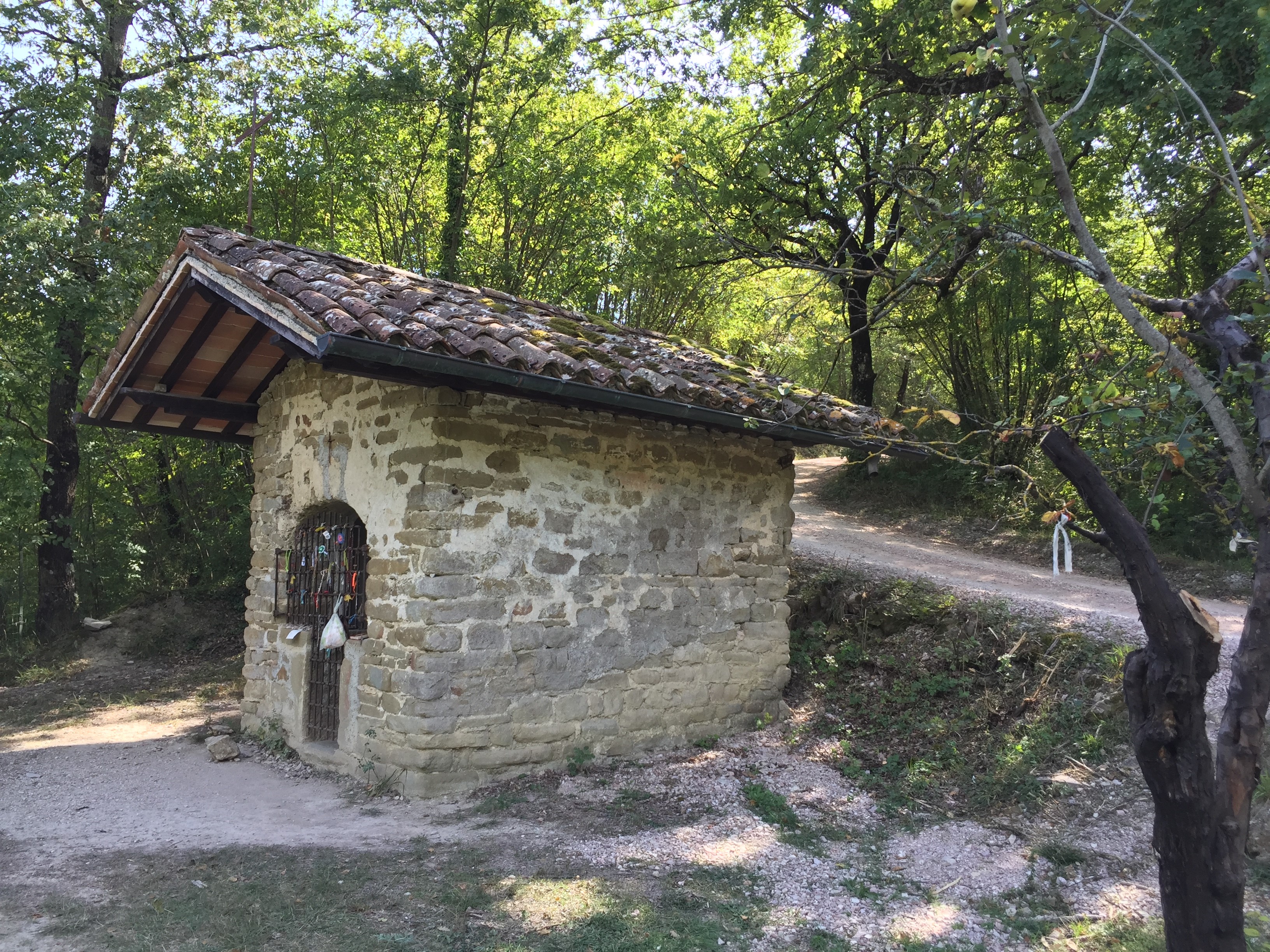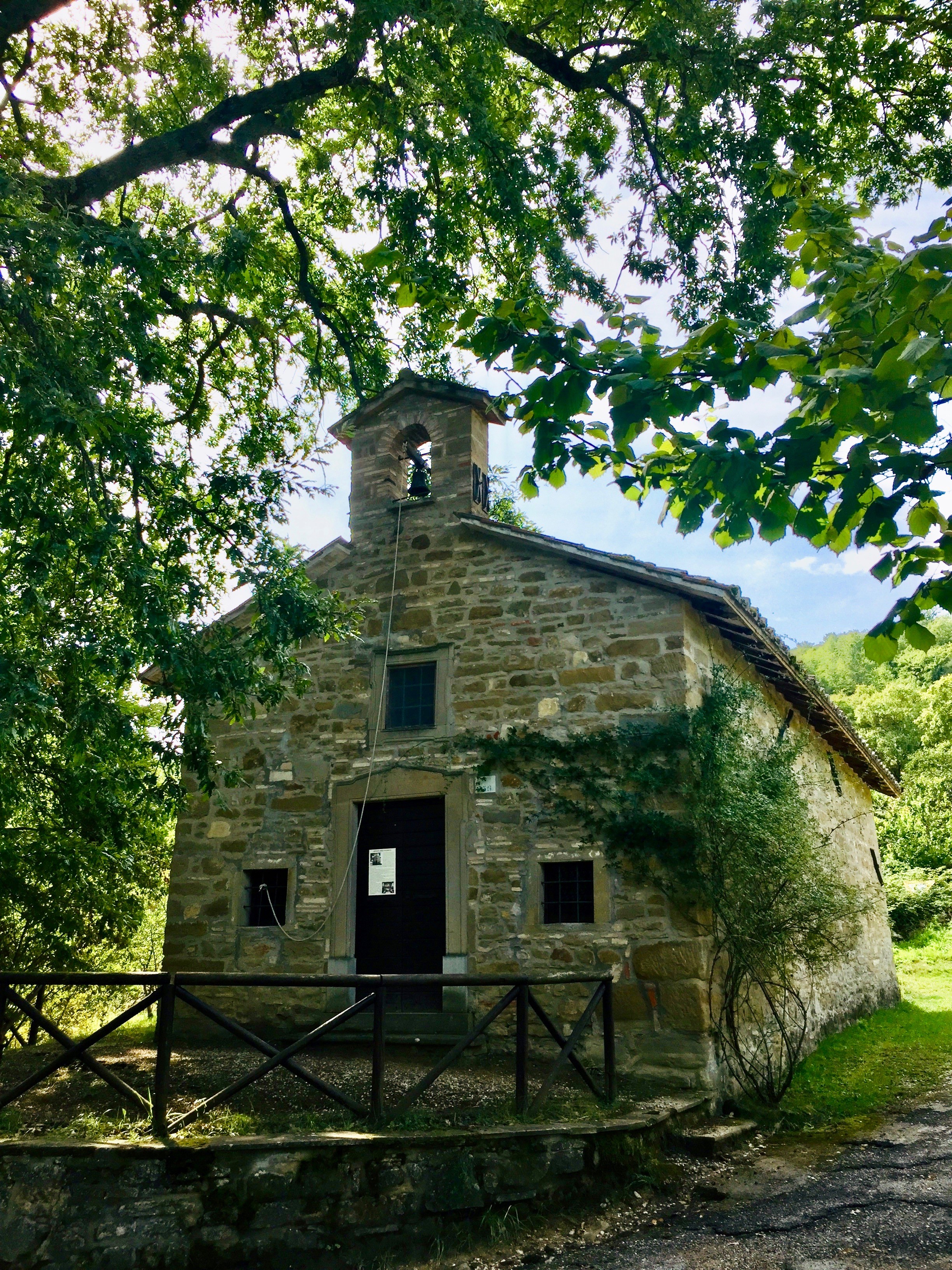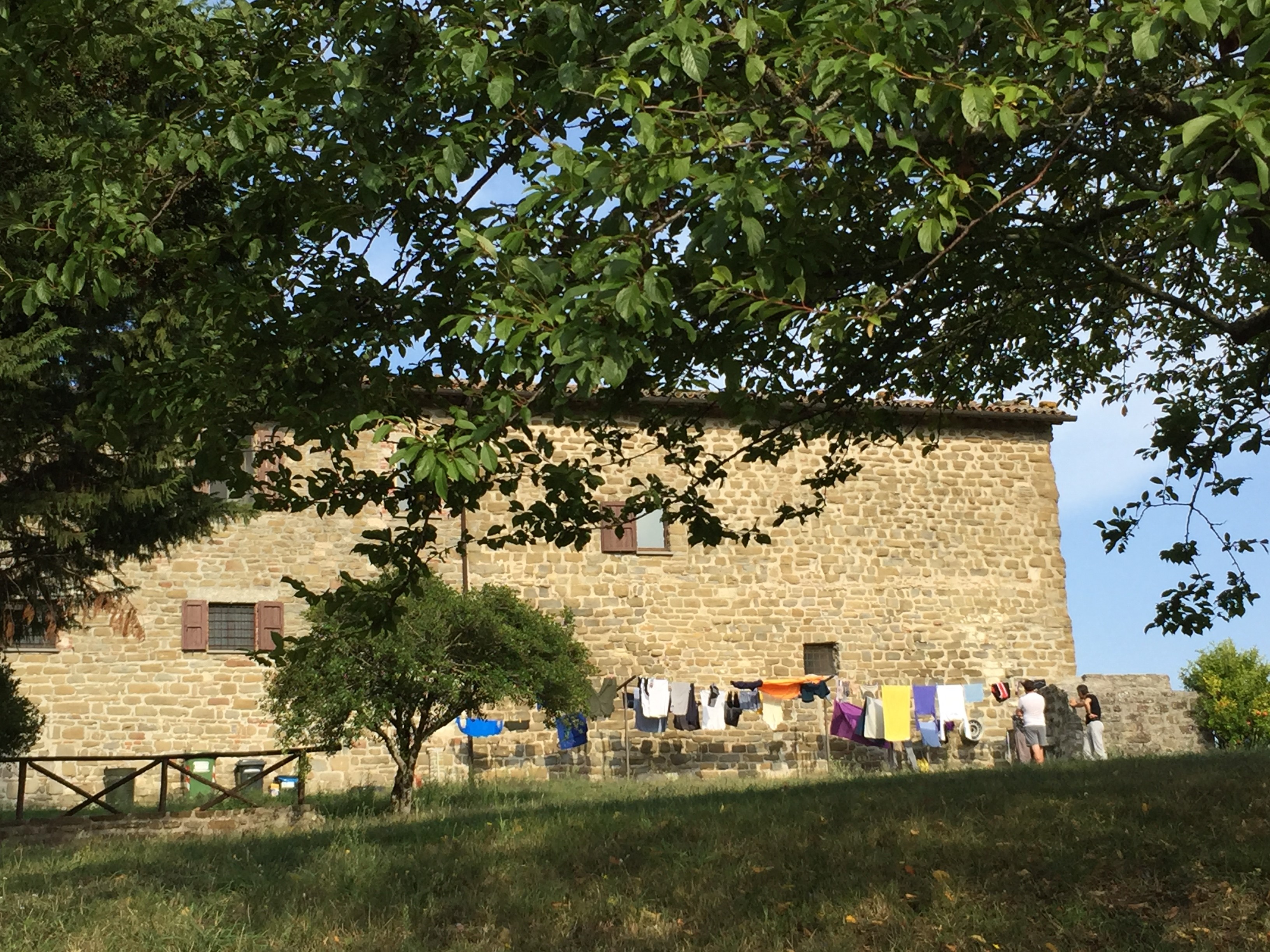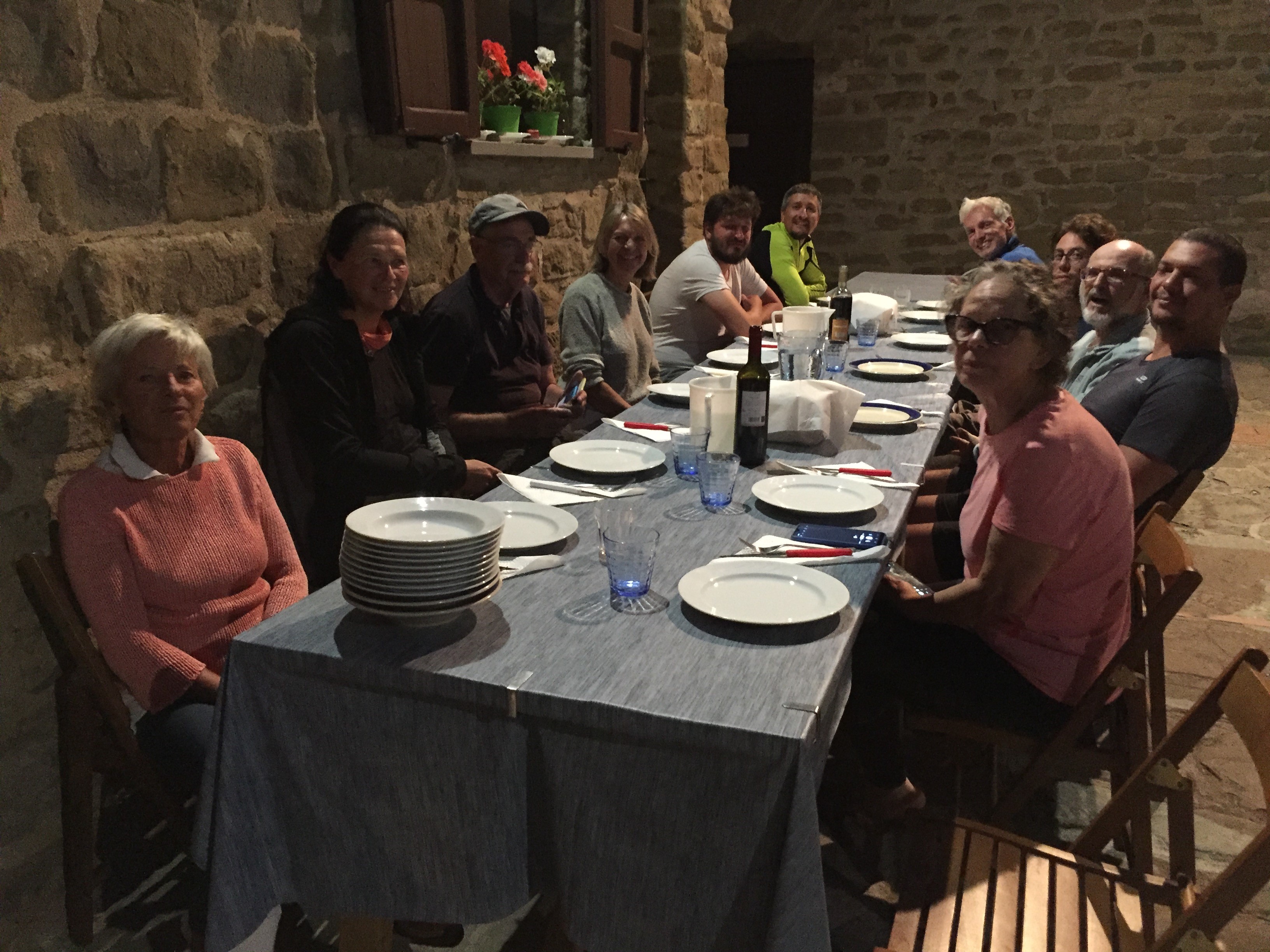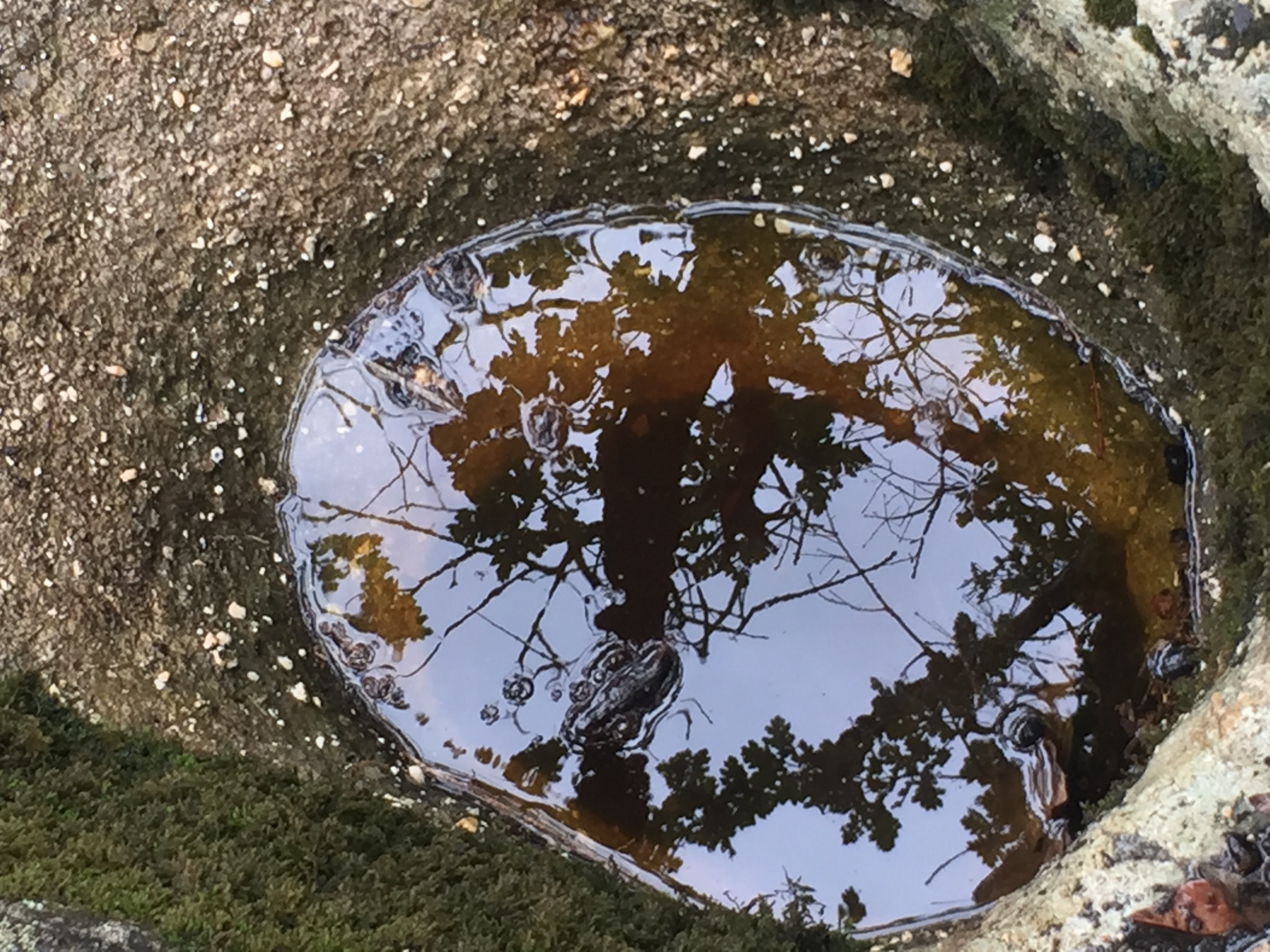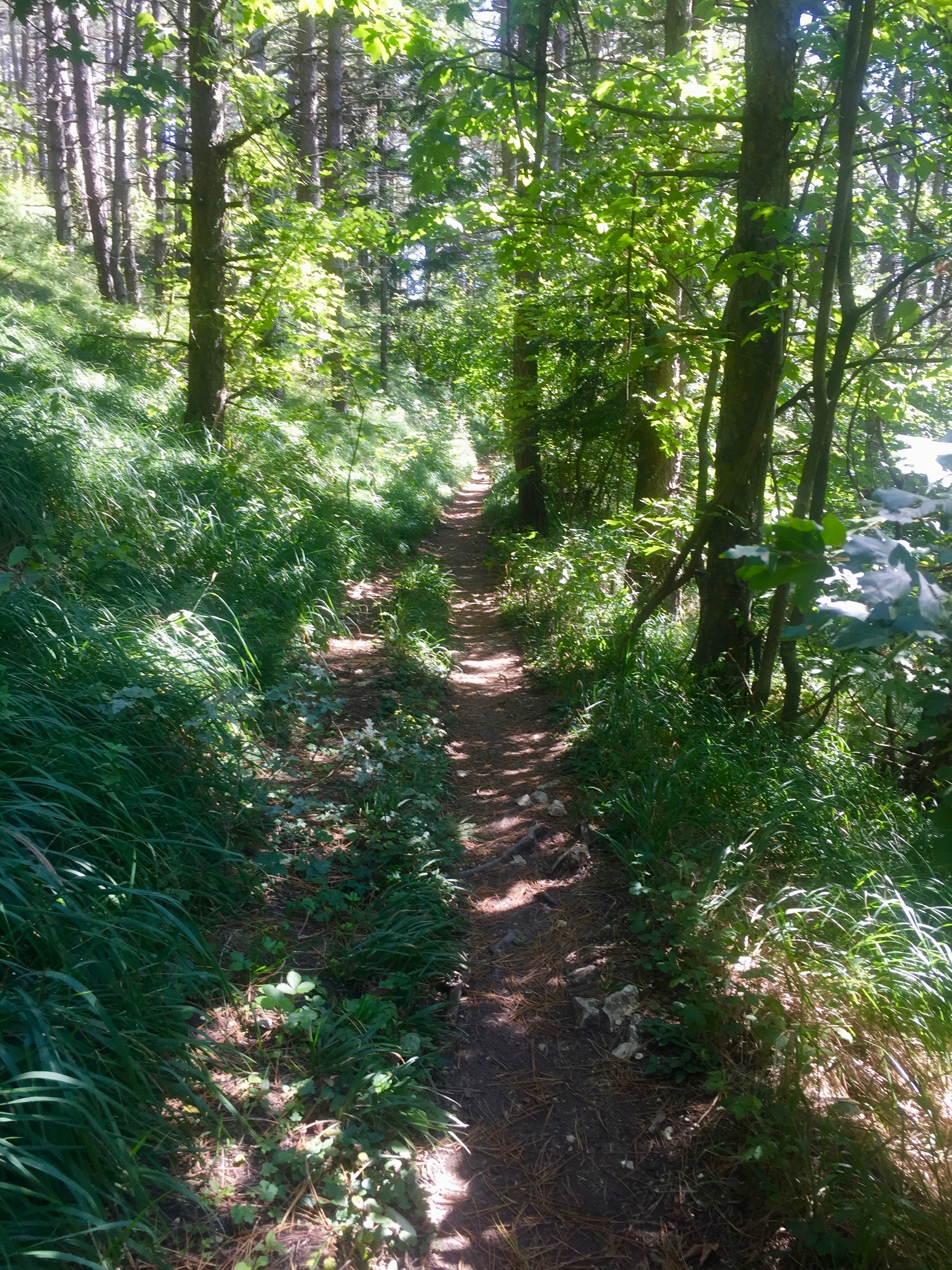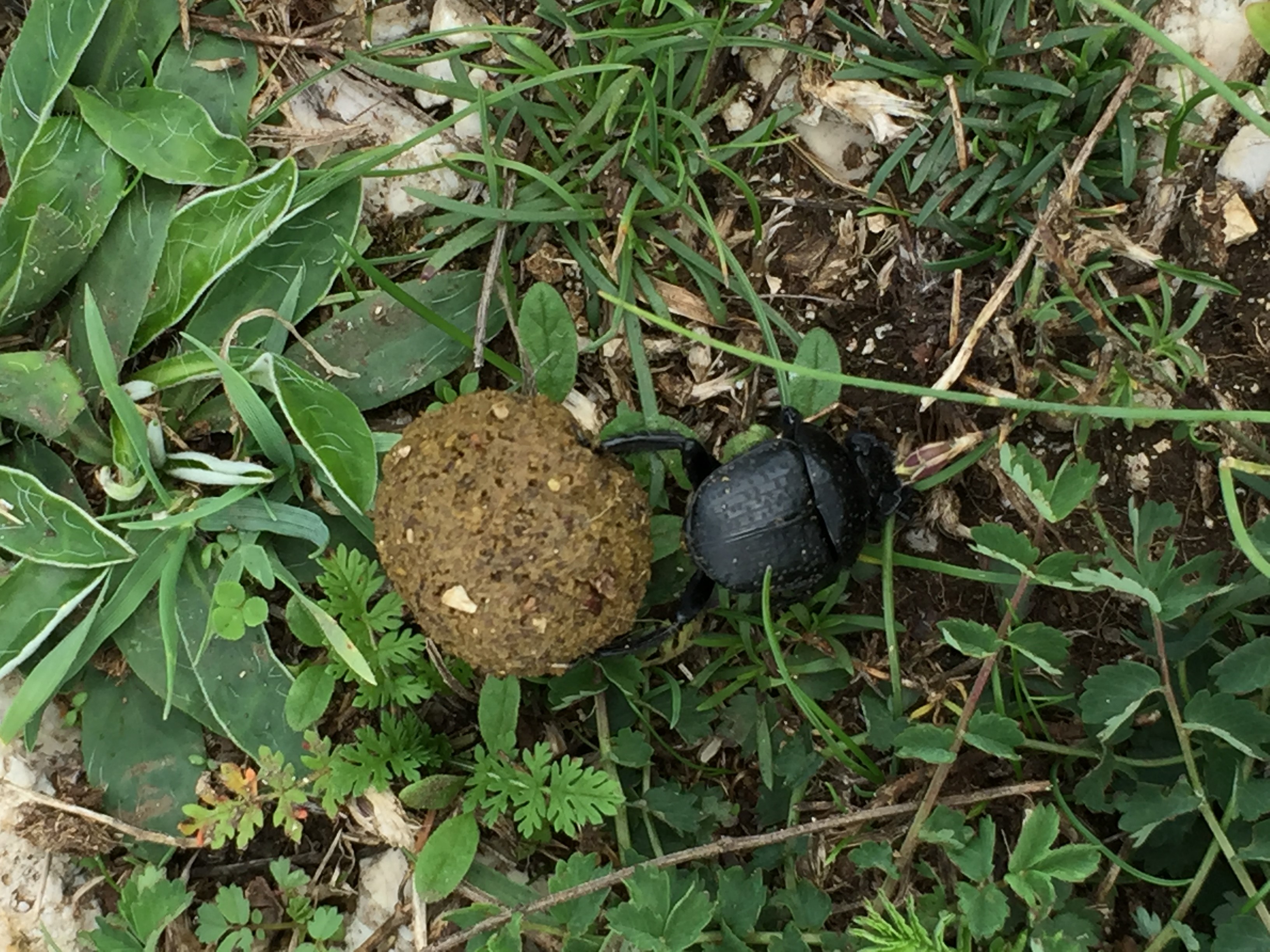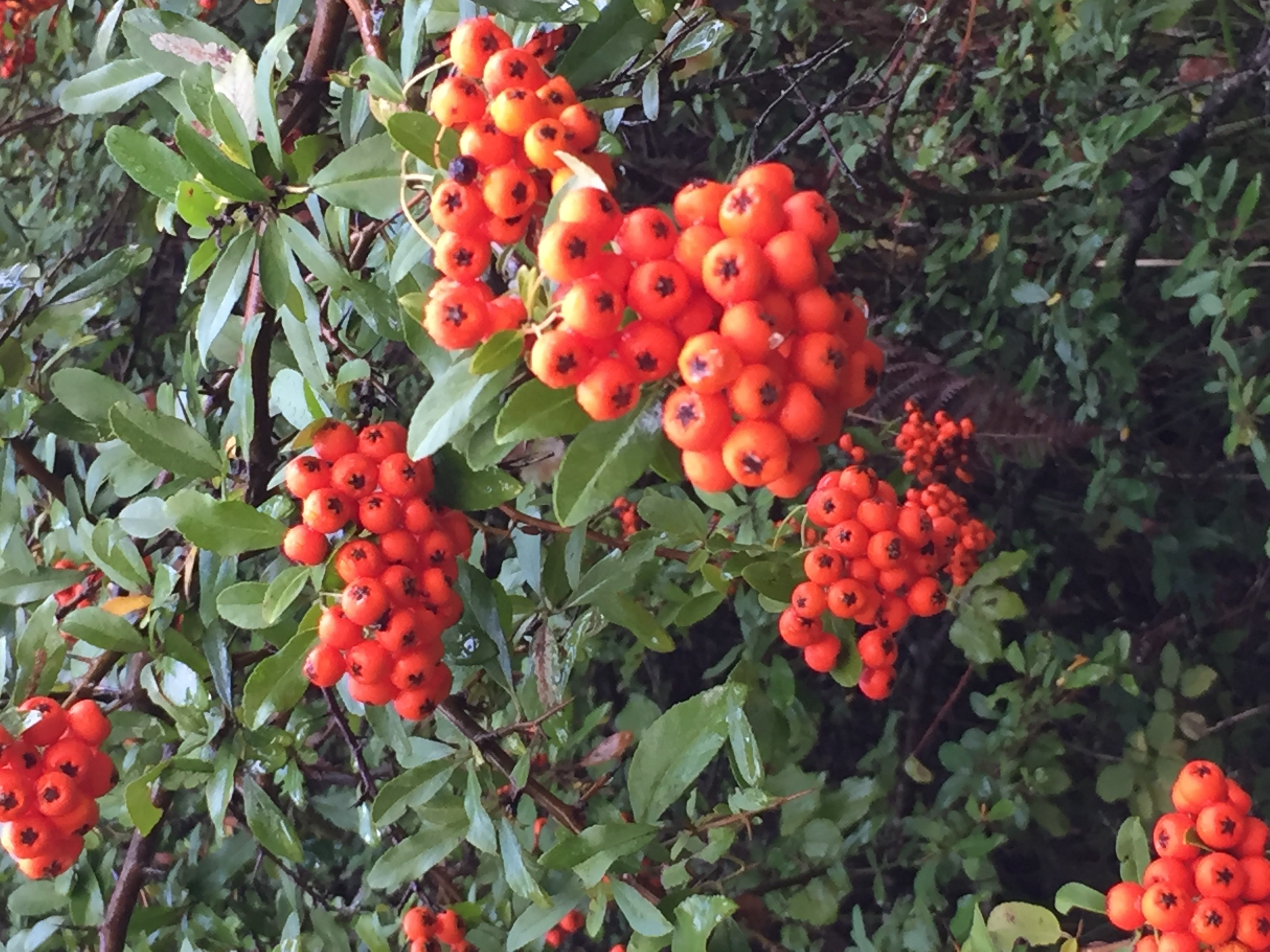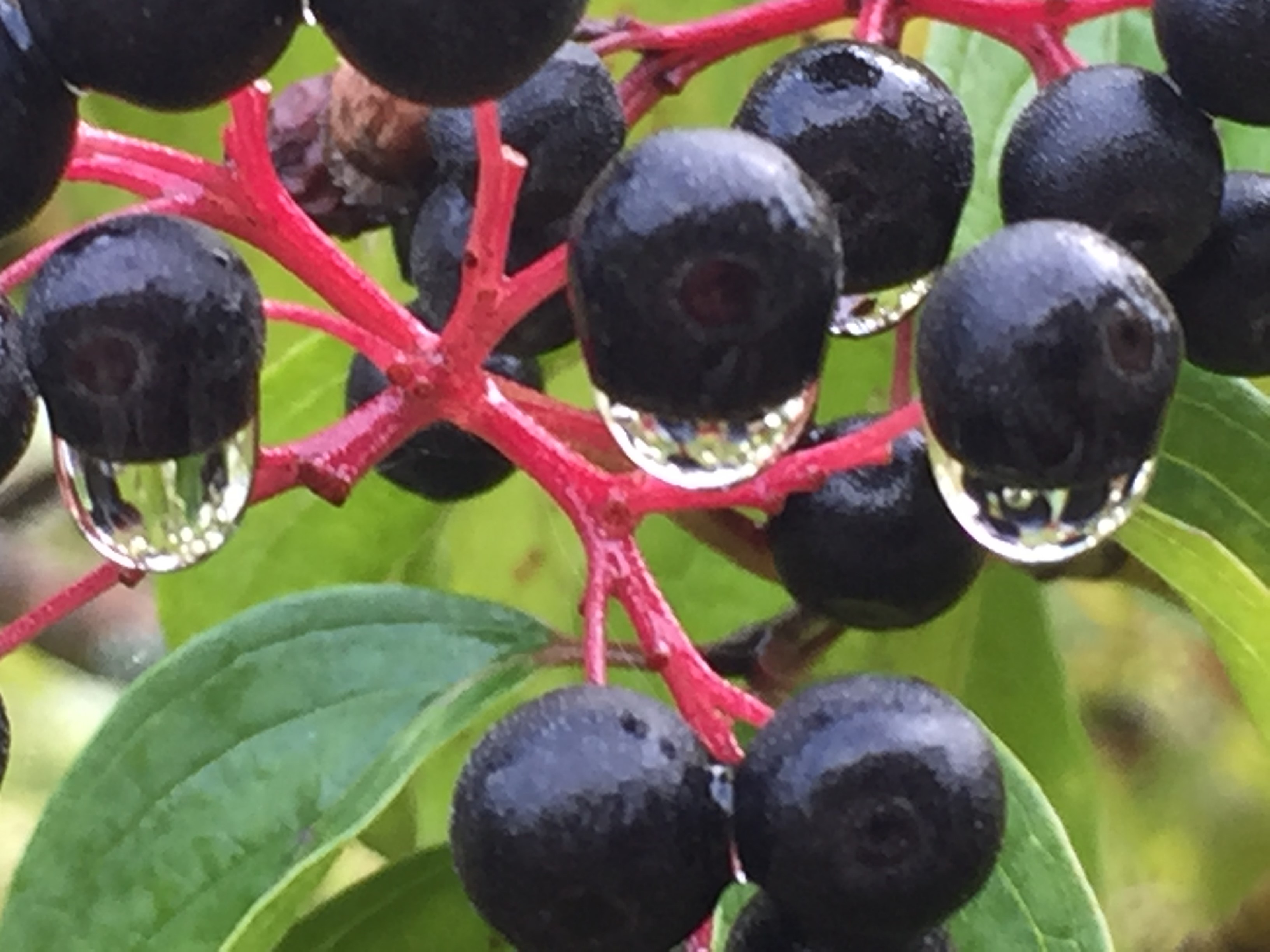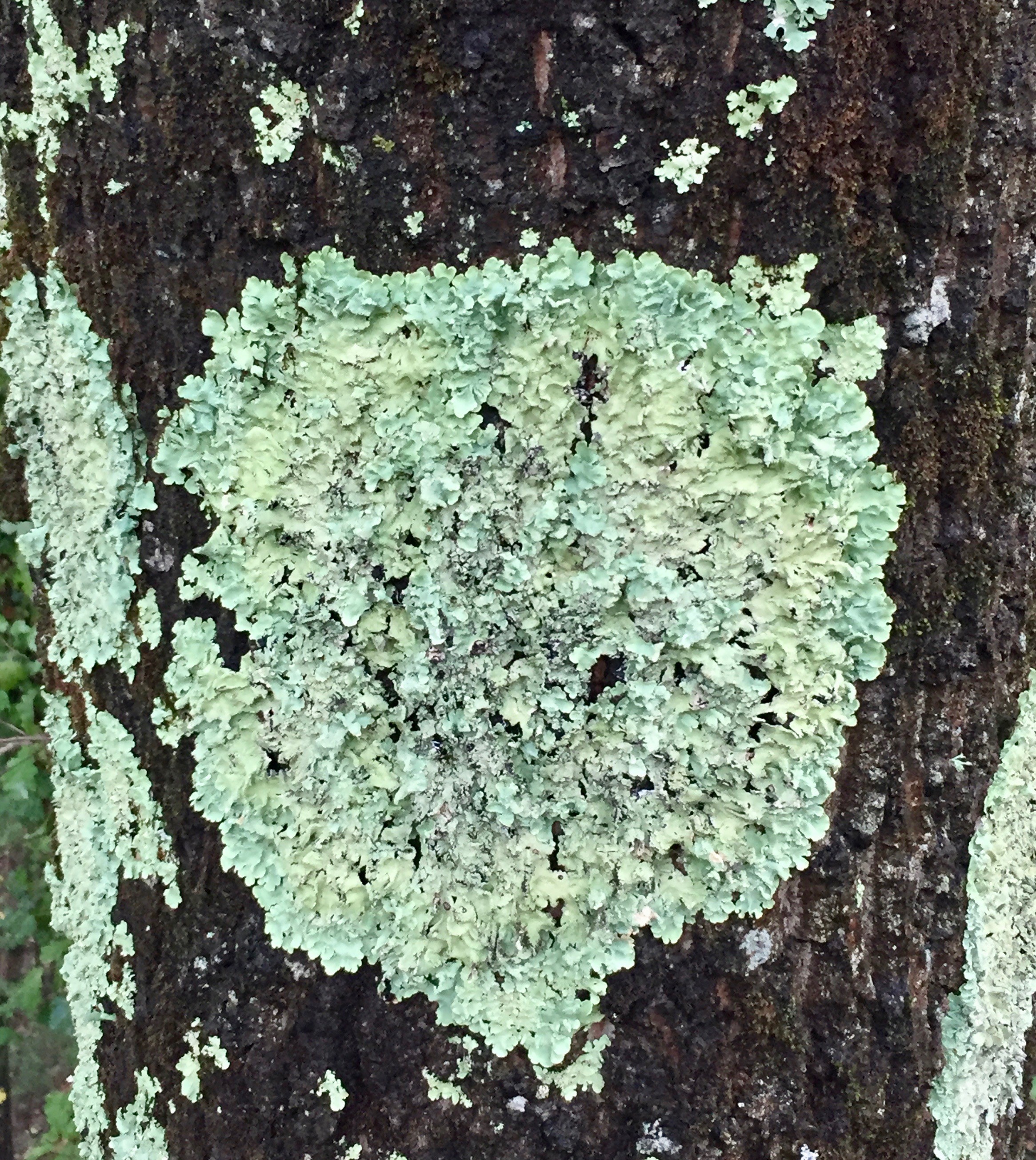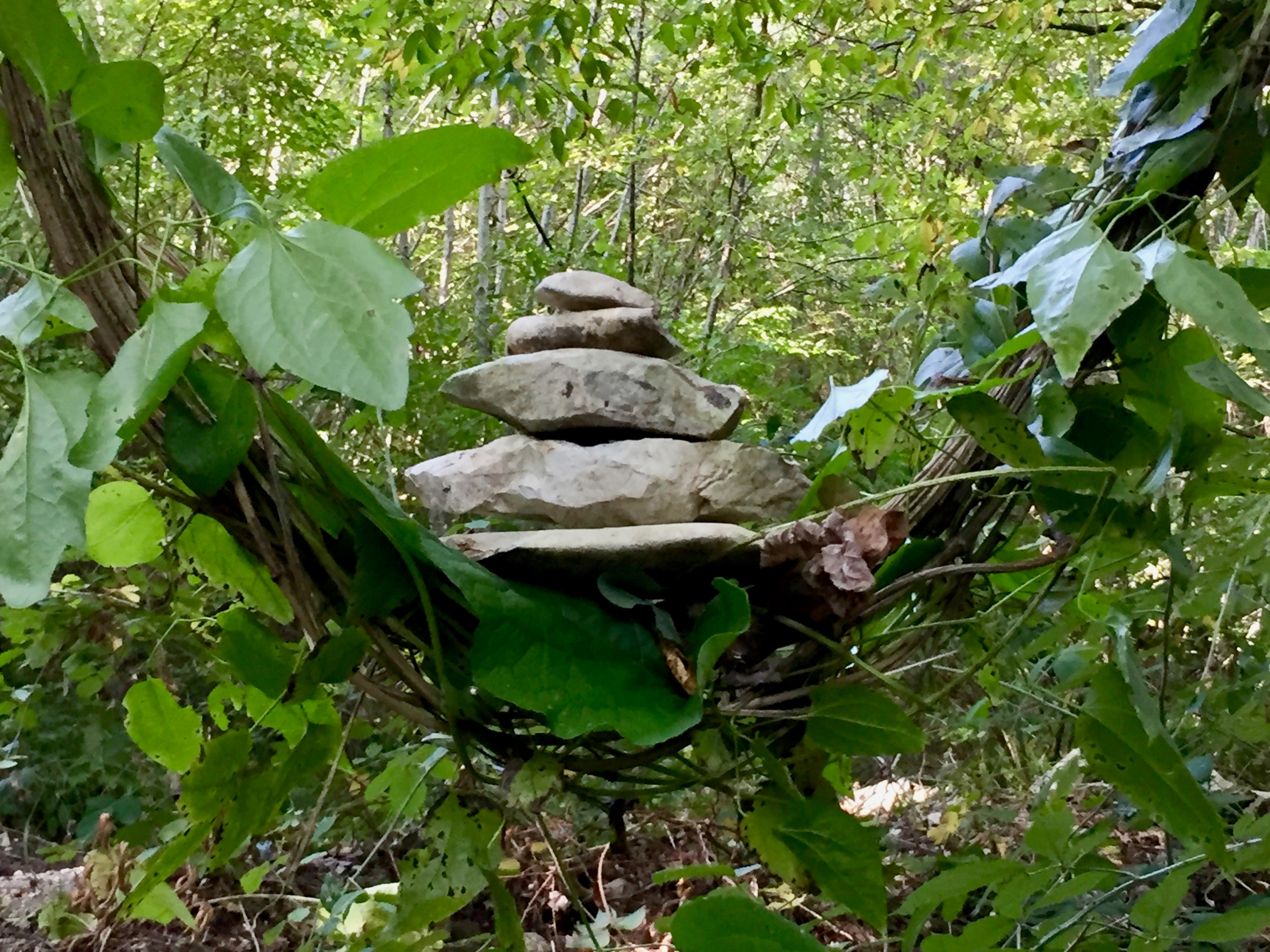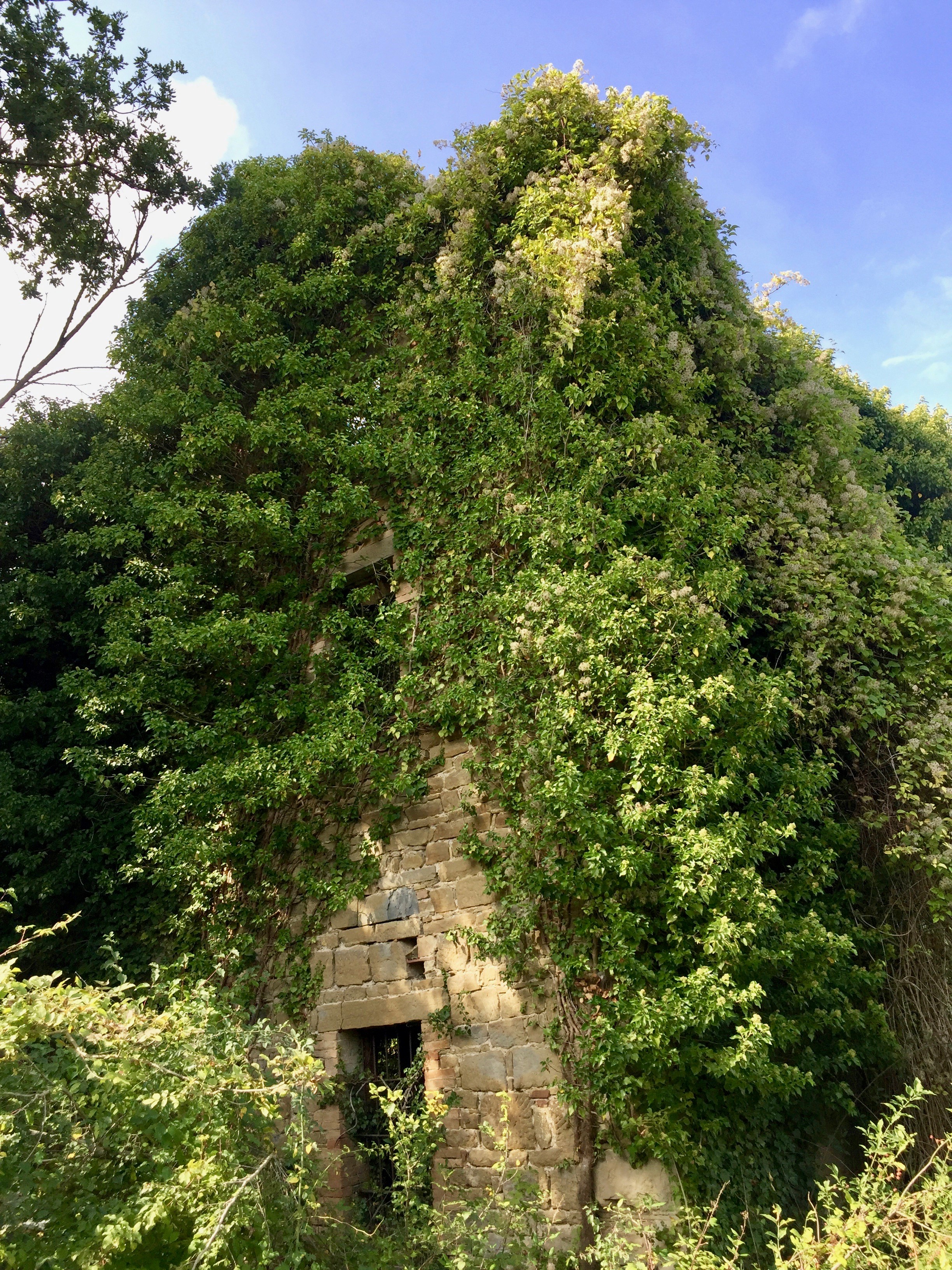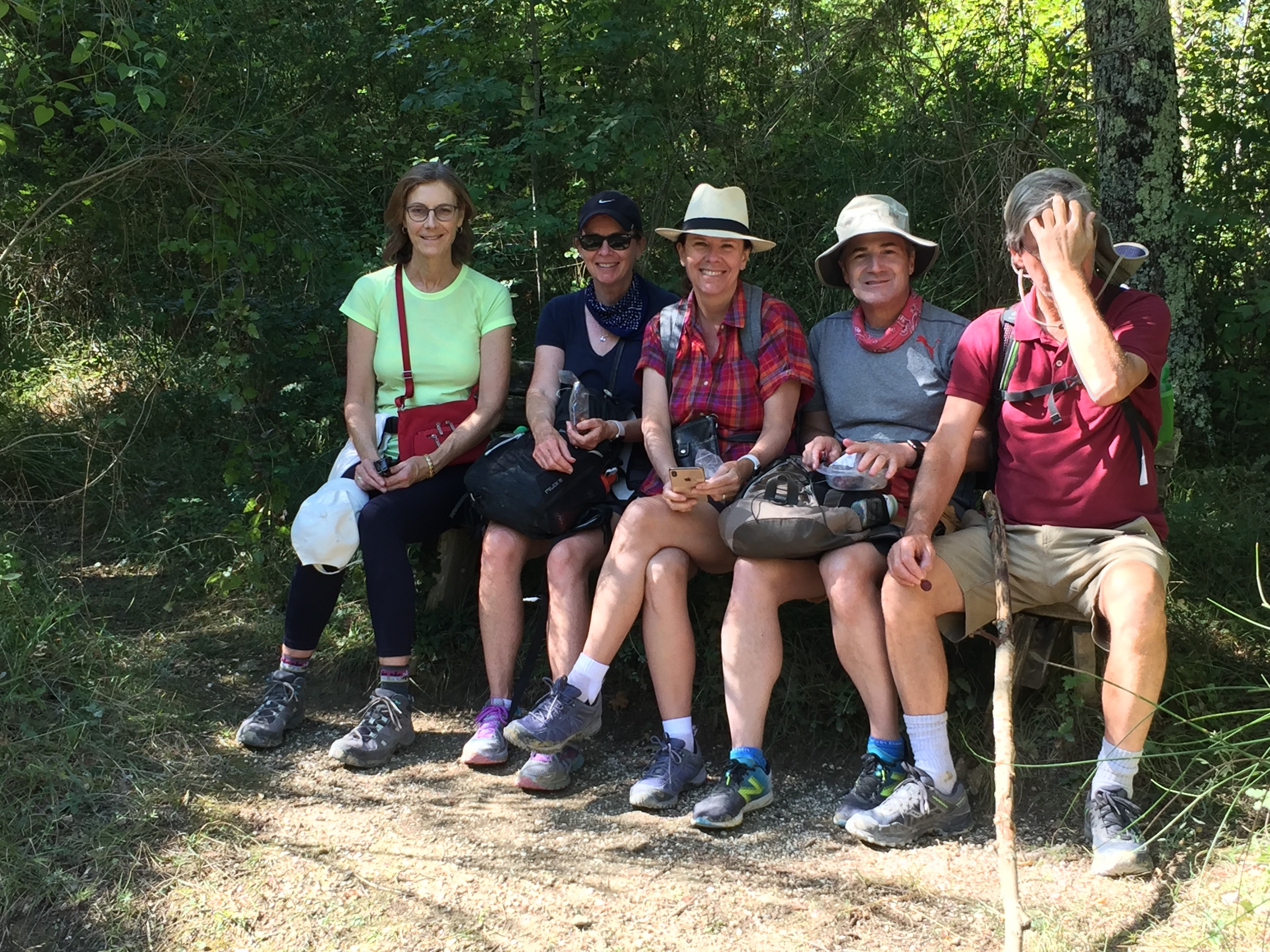(7)
Spirit of creativity and playfulness
A pilgrimage is a time of solitude where deep listening can be practiced. Deep listening means to open the heart to everything that is. It is communication with nature, people, and one’s own inner voice. In order to be open, I think it is of crucial importance not to complain about anything. A complaining mind is a limited mind and a hindrance to seeing what is.
During long times of walking in solitude, the mind becomes open and very receptive. I call this state of mind “heart-mind.” This heart mind is connected, interconnected, and full of vitality. I discovered that during this time of being intimately connected, the strong urge to give form to this experience also arises. Being connected is the birthplace of poetry, drawing, writing, and of other creative activities. However, this activity is free of any goal or judgment. It is reached by playfulness – like a child that is immersed in its play without looking for any approval – it is just doing.
Looking back to Gubbio
When I left Gubbio in the early morning, the sounds of bells mixed with bird songs accompanied me to the outside of the city. I was walking on the Sentiero Francescano della Pace, the way of peace. It was the same way St. Francis walked from Assisi to Gubbio after he broke with his familiar life 813 years ago.
I passed beautiful little stone shrines and chapels.
At one chapel, I rang the bell in honor of my uncle Herman, who turned 93 that day.
I spent the night at the Monastery St. Peter, which was transformed into a place for pilgrims. Like so often on my pilgrimage, they cooked a fantastic meal.
Monastery St. Peter with pilgrims hanging their clothes to dry
Inner court of the monastery with pilgrims
It rained during the night. The next morning, everything was vibrant and fresh. I was in awe! The intense fall colors, the raindrops on grass and berries glittering in the sun, the smell of wet soil. Everything was so special.
A little pool in a rock where rainwater was captured
By now, I had made a fascinating discovery about myself – I did not want to memorize poems anymore. Instead, I had a strong urge to give my experience a form by creating haikus. I wanted to stay with the experience and not leave it until I could capture it. During my pilgrimage, I wrote more than hundred haikus, (most of them in German).
The yellow flowers
Shine the way like little lamps
On a shaded slope
Dung Beatle
Lichen on a tree trunk
My strong desire to respond to nature led me to do some land art. I could not do that very often, though, because my time was limited.
Playful response to nature
Old farmhouse overgrown with evergreens
The second night, I stayed in the place called Ostello Franciscan il Sentiero in Valfabbrica. Here, I met a Canadian family who went on the pilgrimage in honor of their father. He had just died at the age of 94. He loved poetry and so did his children. We shared our favorite poems.
The Canadian family who loved poetry
I met them again on the path. We greeted each other with a poem. I shared one by Rainer Maria Rilke.
I live my life in widening circles
That reach out across the world.
I may not complete this last one
But I give myself to it.
I circle around God, around the primordial tower.
I’ve been circling for thousands of years
And I still don’t know: am I a falcon,
A storm, or a great song?
When I am on a pilgrimage, my way of staying in the present moment is by connecting with my senses. The world comes to me and I am witnessing it. The incredible beauty of nature – from a dug beetle rolling the ball over and over a little part of the meadow to the magnificent view of mountains and valleys. After having this experience, something in me wants to give it a form and capture the moment. Therefore I take photos, create haikus, and sometimes respond with land art.
I use the time of quarantine to connect with nature on a much smaller scale. Instead of walking, I often sit and observe. I do not have to go anywhere – nature is just there in my garden, in my house. Now it is a shadow of my chair in the morning that creates a sense of wonder, or a yucca plant with a new shoot growing rapidly every day. Preparing food becomes a feast for the senses.
I know that it is up to me how I orient my mind. I can connect with what is right in front of me and let the thinking mind, the worrying mind, take a back seat. The creative expression of something that touches me is very important for my mental health. Therefore, I use the time I have right now to write haikus, make photos, and sometimes do land art. I try to keep my sense of playfulness and do not look out for recognition or approval.

